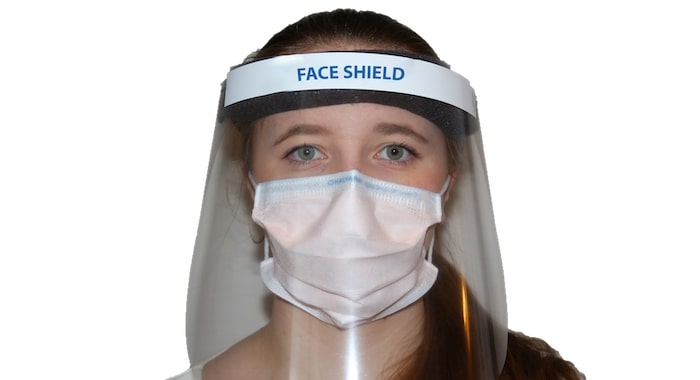
Is Wearing Two Masks Better Than One?
As more and more people have adopted mask-wearing to reduce the spread of coronavirus, you may have noticed some people doubling up on masks. Is wearing two masks better than one?
IT DEPENDS.
If you’ve managed to obtain an N95 or an actual surgical mask (not the “medical looking” masks you can buy at the store), then putting another layer over the top probably doesn’t do much good. These health care masks are made of tightly woven materials specifically designed to prevent viral particles from penetrating, so they probably don’t need any extra help.
But if you’re using a basic cotton mask, wearing a second mask might indeed trap more viral particles in your breath when you exhale and might also provide better protection against inhaling the virus from the air. Recent research conducted on individual masks indicates that a two-layer cloth face mask performed better than a single-layer mask. So, does that mean that the extra layers you’d get from double-masking would offer even more protection? We don’t have scientific evidence about that yet, but until we do, it probably doesn’t hurt to double-mask, especially if you find yourself in a higher-risk situation, like living with someone who’s sick with COVID-19.
That said, don’t develop a false sense of security that double-masking means you don’t also have to take other public health precautions. You still need to maintain physical distance from other people. And wash your hands.
Also, no matter how many layers of fabric your mask contains, make sure it fits well and hugs your face without gaps. Gaps can allow germs to escape or to get in and make you sick.
Lastly, remember that the best mask is the one you actually wear consistently. If double-masking makes you uncomfortable and tempts you to pull the mask down under your nose (a no-no!) or ditch it altogether, then just stick with your usual mask.
Do We Need to Wear a Mask with a Face Shield?'
Face masks are important for reducing the spread of COVID-19, but they aren’t always comfortable to wear, which has some people looking for other options like wearing a face shield instead.
The big question, though: Will wearing a face shield alone reduce the spread of COVID-19, or do you still need to wear a face mask with a face shield?
THE ANSWER: YOU STILL NEED TO WEAR A MASK, EVEN WITH A SHIELD.
Face shields may feel less confining than a mask, and they allow you to see other people’s faces, which can be comforting (or vital, if you rely on lip reading for communication). Unfortunately, though, shields don’t deliver the same protection as masks.
Shields do not absorb the droplets in your breath the way a cloth face-covering does. They merely deflect some of the droplets downwards. Because face shields are open at the bottom, there’s a chance any germs in a person’s breath might escape into the air, which is exactly how SARS-CoV-2 spreads. That’s why experts do not recommend using a face shield in place of a face mask.
Face shields do protect your eyes from exposure to viral particles and can keep you from touching your face. And if you’re in a high-risk circumstance, like caring for someone who is ill with COVID-19, wearing a shield in addition to a mask can offer an additional layer of protection for the mouth and nose.
If you decide to wear a face shield, be sure to wear a cloth mask under it. And wash the face shield after each use, to clean off any germs sticking to the surface of the plastic.
Precision Pain Care and Rehabilitation has two convenient locations in Richmond Hill – Queens and New Hyde Park – Long Island. Call the Richmond Hill office at (718) 215-1888, or (516) 419-4480 for the Long Island office, to arrange an appointment with our Interventional Pain Management Specialist, Dr. Jeffrey Chacko.













